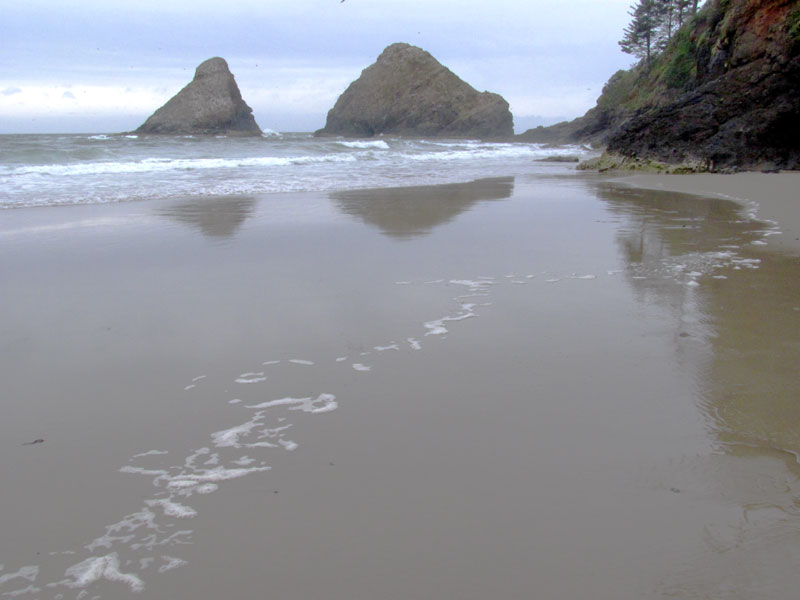Blobs and Sea Stacks of Heceta Head - What Happened
Florence, Oregon Virtual Tour

Sea stacks are almost a dime-a-dozen along the Oregon coast, but some have more tales to tell than others. Those at Heceta Head begin with the fiery tale of their origin, going back some 37 million years old. They were once part of the larger headland after being created by a massive lava field, but then eroded away over the eons to what you see now.
The first rock you see closest to the headland is called Parrot Rock, sometimes known as Conical Rock. Titles seemed to switch around over the lighthouse's more than century's old history. The farthest one out is called Pinnacle Rock.
If you notice, Parrot Rock has a bit of an abrupt edge to it facing the headland. That's always been mostly that shape, at least from a distance. But in the '80s they had to blast a chunk of it off because tourists kept hurting themselves on it. Some actually died trying to hop from rock-to-rock.
Lost Parts of Oregon Coast: When They Blasted Rocks at Heceta Head / Eye of the Needle Arch - Heceta had a much-loved landmark that disappeared and one that had to be destroyed

Also of note here: it used to be home to lots of tufted puffins, who live most of the year at sea but nest on rocks like these. The population of the cute little bird has greatly slipped since the '80s, and this place was one of those telltale signs.
Another feature here had some amount of fame in the late 19th and early 20th century: an arch called Eye of the Needle. Photo here courtesy Keepers of the Heceta Head Lighthouse. More about it in that story as well.

Heceta Head Caves, Different Sides
When They Blasted Heceta Head / Eye of Needle
Oregon Coast Hotels
(Find a Place to Stay)
South Oregon Coast Travel (Florence southward)
